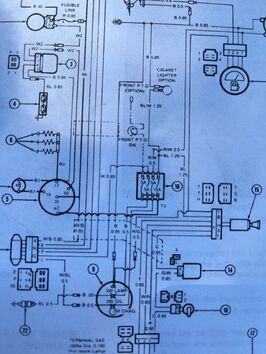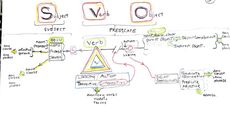|
A GRAMMAR SKELETON Here (below) is a simplified "skeletal" view of the essential bones of the typical English sentence. In the vast majority of sentences uttered or written in English, the internal elements of the sentence are arranged in a Subject/Verb/Object (SVO) order. Understanding how this basic pattern can grow in complexity and take a myriad of possible configurations, will help you untangle and identify the internal grammatical elements in any sentence. |
Link to Grammar Skeleton
|
The Grammar
Skeleton |

